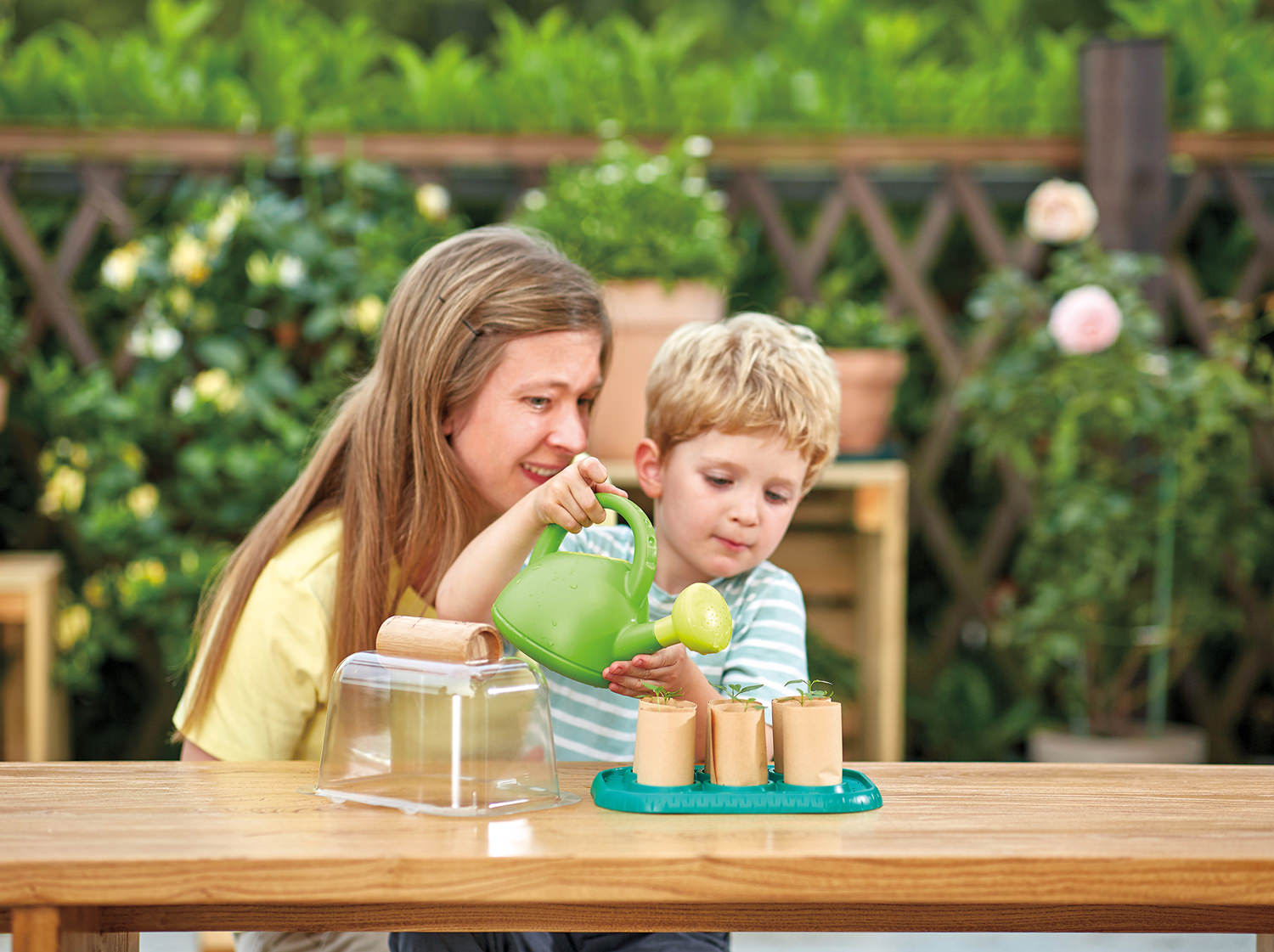Whether you have a large yard or a small balcony, our guide provides 7 easy steps for creating a garden that thrives and fosters your child’s connection to nature (and their green thumb!). Let's explore how to begin a garden.

The first step in gardening is selecting the right location. It should be a spot that gets plenty of sunlight – at least six hours daily. If you’re short on space, a small balcony or even an indoor window ledge works just as well as an outdoor garden. For these smaller spaces, make sure to pick a planter with plenty of space and good drainage. Once you’ve chosen your location, it’s time to gather your gardening supplies. Here’s what you’ll need:
With your children, start by breaking up the soil. This hands-on activity not only teaches them about soil preparation but also about how soil supports plant life. Mix in compost to introduce them to the concept of soil enrichment and discuss how this helps plants grow stronger.

This is where the excitement begins. Guide your little gardeners in planting seeds or setting young plants into the soil. Teach them to make appropriate-sized holes for seeds or to nestle plants carefully into the ground, emphasising the need for space between plants so they have room to grow.
Teaching your children the proper way to water the plants is key to a happy, healthy garden. A light, regular sprinkle is more beneficial than infrequent heavy watering. Introduce them to the concept of weeding, explaining how removing unwanted plants helps their garden thrive by reducing competition for nutrients and light. If you’re using a planter box, weeding isn’t necessary, but you can still teach them about this concept by taking them to a community garden or similar space.
Keeping a garden diary or making drawings of the plants can deepen their engagement and understanding of plant biology. Encourage your children to observe and document the growth of their garden. They can note changes, measure plant growth, and compare the life stages of different plants.

Harvest time is particularly rewarding. When the vegetables, fruits, or flowers are ready, it’s time to harvest! This is a great time to talk about the origins of food and the importance of caring for the environment. Preparing a meal with the produce from your garden or making a bouquet from flowers they’ve planted can also provide a tangible sense of achievement and pride.
After harvesting, sit down with your children and discuss what worked and what didn’t in their garden. Ask them what they enjoyed the most and what they found challenging. This reflection can lead to a better understanding of natural processes and can help them think critically about solving problems.
Gardening is a hands-on experience that helps instil a sense of responsibility and respect for natural resources, encouraging sustainable practices from a young age. They see firsthand how plants grow from seeds, the importance of insects and pollinators, and how weather and climate affect living things. By understanding the effort it takes to grow food, children can also begin to develop empathy for farmers and an appreciation for the food on their tables, which fosters a deeper connection with the world around them.